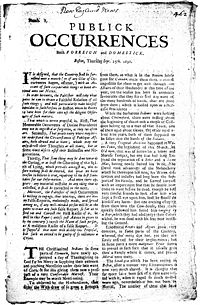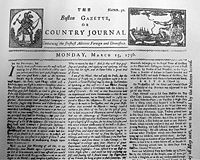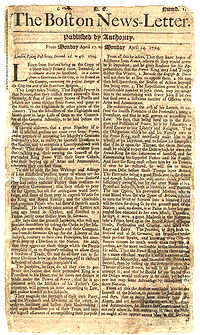Course talk:ETEC540/2009WT1/Assignments/ResearchProject/NewspaperInAmerica
Following are some questions you might consider in addressing topics listed above that have to do with shifts in communications technologies. (You are not required to take up these questions—they are merely offered by way of providing ideas for those who may be having difficulties getting started on this project.) Do not attempt to address all of these points in the course of writing your assignment unless you are working with a group that has elected to consider the effects of a particular innovation from a number of perspectives.
- How did this technological innovation modify the look and feel (the phenomenology) of reading and writing (or of communication in general)?
- In what ways did it facilitate the process of reading and writing?
- What forms of knowing, or thinking, does it invite? (cf. Snyder's remarks on this subject cited in the course prefatory materials.)
- Did this technology advance or retard progress toward mass literacy in any way?
- Did it threaten any existing political or religious institutions?
- Did it modify social structures in any way?
- In what ways did it meet the needs of the culture that produced it? (In other words, examine the technology not only as an agent acting on culture, but as a product of culture.)
- How did it change educational practices?
- Did it precipitate any change in literary practices (i.e., in terms of style, form, and so on)?
Experimenting in print
This second topic takes up the ideas offered by Ong in Chapter 6 of Orality and literacy respecting the ways in which technologies for writing modify our understandings of literary form. Pick a literary text written for the print medium (i.e., Jorge Luis Borges, any collection of short fiction; Italo Calvino, The Castle of Crossed Destinies; Julio Cortazar, Hopscotch; James Joyce, any title). Remark on how the work in question pushes the boundaries of print, and how, in doing so, it draws our attention to the shortcomings or strengths of that technology. For an example of what you might do with this topic, consider the subsection of Bolter's Chapter 7, "Sterne and the novel as conversation" (pp. 140-142). In this section, Bolter remarks about the ways in which the eighteenth-century writer, Lawrence Sterne, pushed the boundaries of the novel as a literary form. In what way is the literary text you've selected a harbinger of change in writing technologies? Alternately, consider how a particular literary work has been, to some degree at least, shaped by the text technology for which it was written. For example, Dickens wrote his novels for serial publication: in what ways do the content and structure of one or more of his novels demonstrate this?
The public prints the newspaper in Anglo-American culture, 1665-1740
Broadsides for Freedom: Civil War Propaganda in New England
the press and the printed word by Aled Jones
powers of the press by Aled Jones
image source http://commons.wikimedia.org/wiki/File:Publick_Occurrence_%28page_1%29.jpg
http://commons.wikimedia.org/wiki/File:BostonGazette_1756.JPG
http://de.wikipedia.org/wiki/Datei:17040417_Boston-News-Letter_1-1374x2304.jpg
| Publick Occurences Both Forreign and Domestick (1690) | The Boston Gazette or Country Journal 1726 | ???? |
- [View source↑]
- [History↑]


